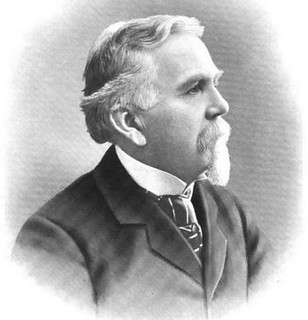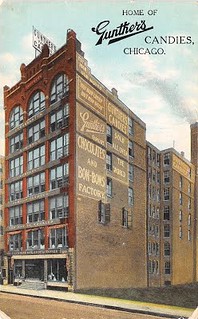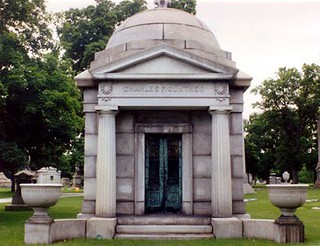
PREV ARTICLE
NEXT ARTICLE
FULL ISSUE
PREV FULL ISSUE
CHARLES FREDERICK GüNTHER (1837–1920)
John Lupia submitted the following information from his Encyclopedic Dictionary of Numismatic Biographies for this week's installment of his series. Thanks. As always, this is an excerpt with the full article and bibliography available online. This week's subject is collector and candy-maker Charles Frederick Günther.
-Editor
He was born on March 6, 1837, in Wildberg, in the Schwarzwald or "Black Forest" district of Baden-Württemberg, Germany, son of Johann Martin Günther, a candle and soap maker, and his wife Marie. In 1842, when he was five years old his family moved to America and at first settled in Columbia, Lancaster County, and in 1848 moved on at Somerset County, Pennsylvania. His parents raised him speaking both English and their native German and French. Later on Gunther also learned Spanish. While at Pennsylvania he attended private elementary schools. As a young boy of ten he worked as a letter-carrier on horseback for the United States Post Office for twenty-five cents per diem. When he became a teenager, in 1850, his family removed to the Illinois Valley in what is today known as Peru, La Salle County, Illinois. By 1860, he became involved through his family and business connections with the ice industry since Peru at that time was a large ice harvesting and shipping center, collecting ice from the canal connecting Chicago with the Mississippi watershed. Gunther moved to Memphis, Tennessee, in December 1860, and worked for an ice importer and distributor, Bohlen, Wilson & Company, who imported ice from Peru, Illinois. Five months later the Civil War broke out and the ice business suffered. He aided the Confederate Army as a civilian in military service working as a steward and purser buying supplies and ferrying troops along the Mississippi River. His own account is preserved in his diaries during the two years he worked sailing and ferrying Confederate soldiers on the steamboat Rose Douglass along the Mississippi River, now available through the research and publication by Bruce S. Allardice and Wayne L. Wolf, Two Years Before The Paddlewheel : Charles F. Gunther Mississippi River Confederate. (Texas A & M, 2012). In December 1862, his ship was captured and destroyed at Van Buren, Arkansas. Gunther was captured by Union forces on the Arkansas River and held prisoner by the U. S. Army at Arkansas, but released to return home to Illinois. After his return to Illinois he became employed at the Peoria Bank. He worked there only a short term and became employed by C. W. Sanford as a candy salesman selling and distributing confections in the southern states. He made his first trip to Europe and returning to America worked for Thompson, Johnson & Company, Grocers. After a two year stay with the wholesale grocers firm he joined Greenfield, Young & Company of New York as their Chicago representative as a distributor of their confections at Chicago.
At that time he began decorating his candy store with antiques and artifacts, coins and curiosities. In 1877, he purchased the deathbed of Abraham Lincoln setting it up in his store. He was also extremely naive and was easily bilked by flimflam artists who sold him fake relics and antiquities like the West Point Chain, the "Skin of the Serpent that Tempted Eve in the Garden of Eden", and the mummified remains of Moses' foster mother Bithiah. Yikes!
From 1888- September 21, 1889, he reconstructed the Libby Prison War Museum, originally built in Richmond, Virginia, shipped stone by stone and purveyed by train via 132 twenty-ton cars to Chicago, was rebuilt on South Wabash Avenue, Garfield Park, which housed the largest collection of war relics known in the country. The Museum had a gift shop which Gunther called "Uncle Tom's Cabin" in which he sold silver Lincoln souvenir spoons, Libby Prison War Museum cigars, and other memorabilia including a 6"x6" guidebook, A Trip Through The Libby War Museum Chicago. The building originally was erected in 1845 by Luther Libby and occupied by him and his company Luther Libby & Sons, Shipchandlers. In 1861 it was taken over by the C.S.A. and converted into a war prison. After 1899 it was torn down and became the site of the Chicago Coliseum, which Gunther organized and was its first president. This and the 1893 Libby Prison Medal were written about in detail in the June 1945 issue of The Numismatist on page 572-574. Gunther also assembled one of the largest collections of Washingtoniana and Lincolniana. In September 1892 when various proposed designs were being published and discussed for the Columbian Exposition Commemorative Half Dollar Gunther objected to the first one asserting his portrait of Columbus was a true likeness, not that offered by the director of the Philadelphia Mint. That year he donated three photographs of the Moro portrait of Columbus to the Detroit Museum of Art. This was recently discussed by Nancy Oliver and Richard Kelly, "Columbus Controversy," The Numismatist, November (2013) : 98-99. In the July 1894 issue of The Numismatist on page 152, it was speculated that the Gunther Collection together with that of the H. H. Gatty and Gunning Collections of idols might go to the Field Museum. In 1893, he introduced a new product line called "Cracker-Jacks," which became an immediate sensation lasting up to our day!
The Chicago Historical Society purchased Gunther's vast collection soon after his death paying less, $21,321.20, far less than the originally agreed on price from the estate for $150,000. On Thursday, August 26, 1920, at 2 P. M., the ANA Convention held at Chicago, held tours of the Gunther Collection at the Chicago Historical Society as part of the Convention program. A very quick and non descriptive mention of that visit was published in the October 1920 issue of The Numismatist on page 462.
To read the complete article, see:
I was unaware of Günther as a collector, and
curious about the Libby Prison Medal. I found an example on the Heritage web site.
-Editor
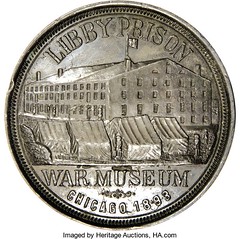
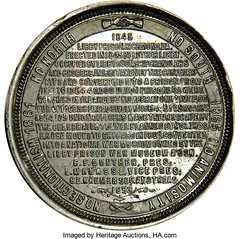
Columbian World's Fair Libby Prison Exhibit Medal. White metal, copper-plated, 68 mm, 181.8 gm. Eglit-477. Obverse Libby Prison War Museum Chicago 1893 with view of prison. Reverse has a long inscription about the Southern prison for Union troops during the Civil War. Charles F. Gunther and others had the prison dismantled and rebuilt on the ground of the Columbian World's Fair. (NGC ID# CGJF, PCGS# 661060) To read the complete lot description, see: Libby Prison War Museum Chicago 1893 Medal (https://coins.ha.com/itm/expositions-and-fairs/columbian-world-s-fair-libby-prison-exhibit-medal/a/427-81526.s)
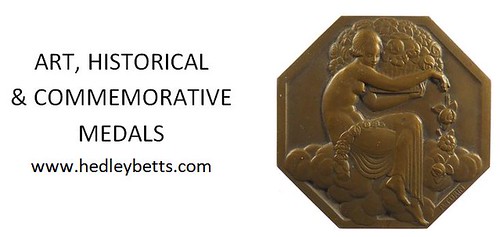
Wayne Homren, Editor The Numismatic Bibliomania Society is a non-profit organization promoting numismatic literature. See our web site at coinbooks.org. To submit items for publication in The E-Sylum, write to the Editor at this address: whomren@gmail.com To subscribe go to: https://my.binhost.com/lists/listinfo/esylum All Rights Reserved. NBS Home Page Contact the NBS webmaster 
|
